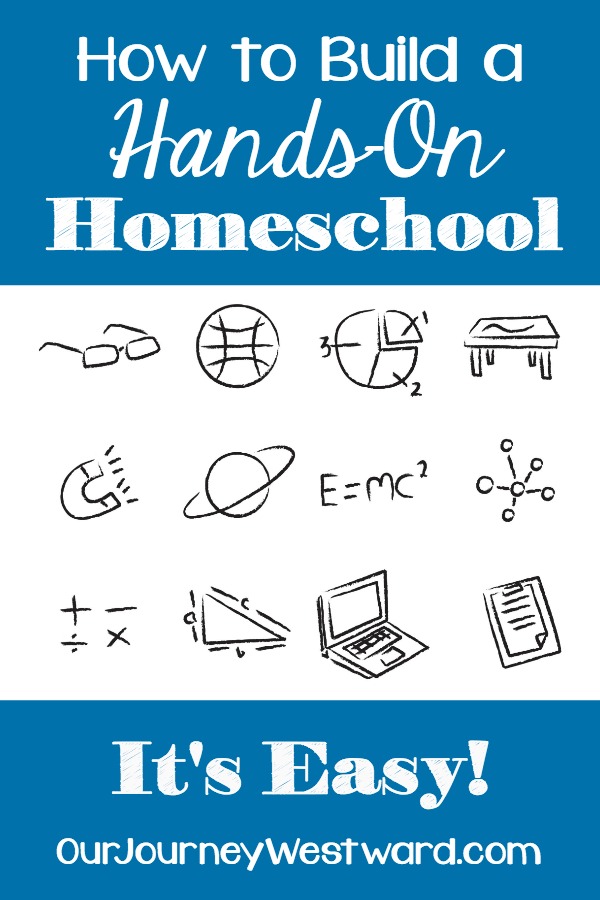How to Build a Hands-On Homeschool. It’s Easy!

These days, it seems like hands-on homeschool is a buzzword of sorts. What’s all the fuss about?
Let’s define hands-on first.
It’s best to define hands-on first because I think its overall meaning might surprise you. You see, hands-on learning can actually mean several things.
Most obvious, hands-on means “touching” things during lessons. For instance, rather than reading about simple machines, you actually use simple machines to learn about their characteristics. Or, when learning about the rock cycle, you make your own rocks by taking them through a rock cycle simulation.
Similar to the definition above, hands-on can also mean learning by doing. When you learn about Colonial history and actually do several of the tasks that would have been done during that era, that’s hands-on. As is cooking or baking.
Hands-on can also mean connecting somewhat abstract ideas to experiences that build concrete understanding. In other words, real-life experiences become building blocks in the brain so that harder concepts make sense. For example, using snap cubes to help a child “see” the formulas for calculating perimeter, area, and volume. Or, using beans to teach how scientists determine a taxonomy.
| Continue reading How to Build a Hands-On Homeschool. It’s Easy! at Our Journey Westward. |
